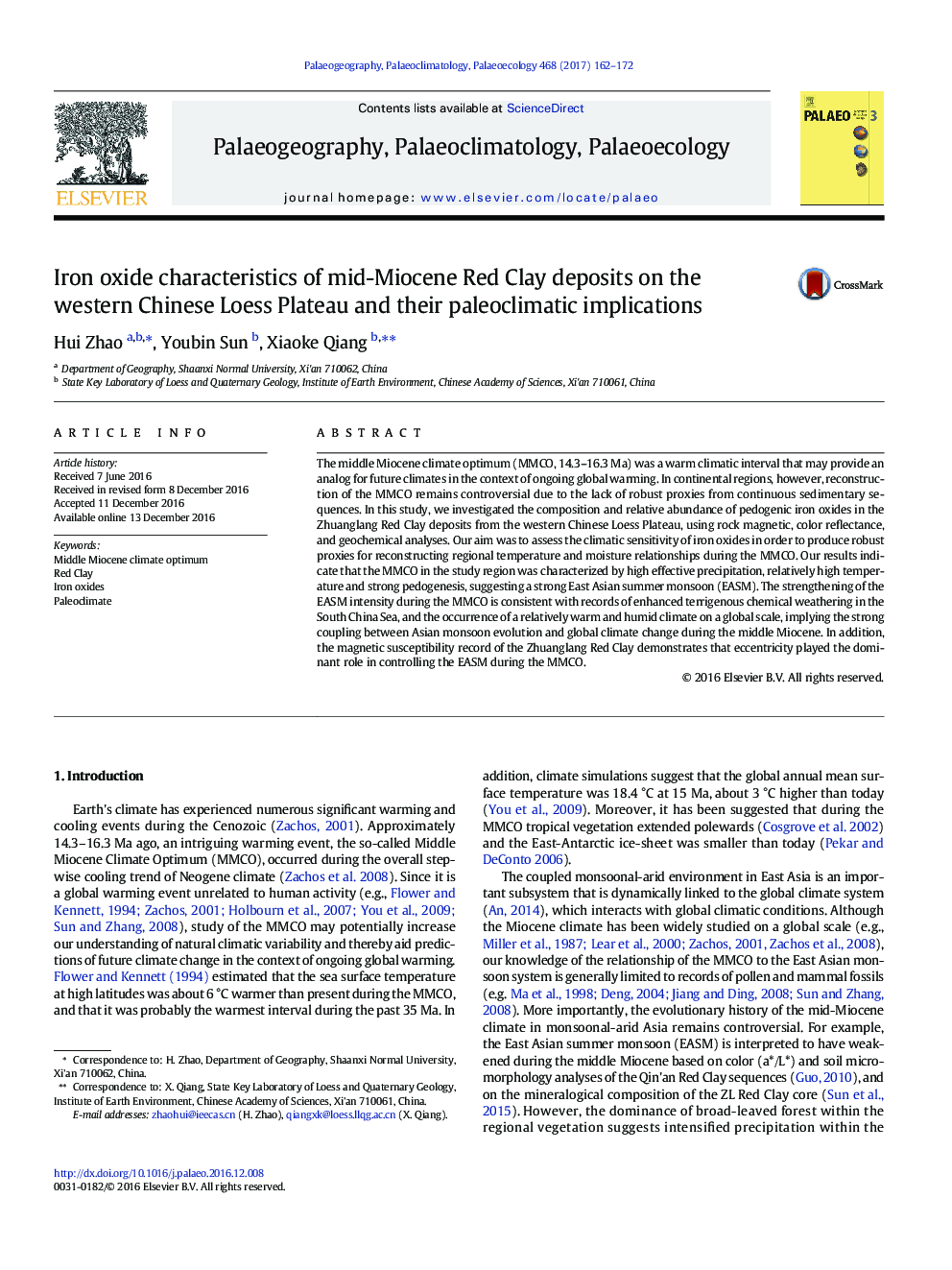| Article ID | Journal | Published Year | Pages | File Type |
|---|---|---|---|---|
| 5755768 | Palaeogeography, Palaeoclimatology, Palaeoecology | 2017 | 11 Pages |
Abstract
The middle Miocene climate optimum (MMCO, 14.3-16.3Â Ma) was a warm climatic interval that may provide an analog for future climates in the context of ongoing global warming. In continental regions, however, reconstruction of the MMCO remains controversial due to the lack of robust proxies from continuous sedimentary sequences. In this study, we investigated the composition and relative abundance of pedogenic iron oxides in the Zhuanglang Red Clay deposits from the western Chinese Loess Plateau, using rock magnetic, color reflectance, and geochemical analyses. Our aim was to assess the climatic sensitivity of iron oxides in order to produce robust proxies for reconstructing regional temperature and moisture relationships during the MMCO. Our results indicate that the MMCO in the study region was characterized by high effective precipitation, relatively high temperature and strong pedogenesis, suggesting a strong East Asian summer monsoon (EASM). The strengthening of the EASM intensity during the MMCO is consistent with records of enhanced terrigenous chemical weathering in the South China Sea, and the occurrence of a relatively warm and humid climate on a global scale, implying the strong coupling between Asian monsoon evolution and global climate change during the middle Miocene. In addition, the magnetic susceptibility record of the Zhuanglang Red Clay demonstrates that eccentricity played the dominant role in controlling the EASM during the MMCO.
Keywords
Related Topics
Physical Sciences and Engineering
Earth and Planetary Sciences
Earth-Surface Processes
Authors
Hui Zhao, Youbin Sun, Xiaoke Qiang,
